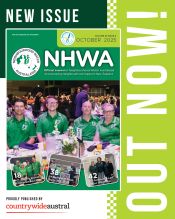Neighbourhood Watch Australasia (NHWA) supports the use of social media to enhance community crime prevention but believes nothing can replace face to face interaction.
Neighbourhood Watch groups have evolved into so much more than their humble beginnings as extra eyes and ears of the community simply reporting crime to police, according to Steve Batterham, President of Neighbourhood Watch Australasia, the overarching governing body of Neighbourhood Watch in Australia and Neighbourhood Support in New Zealand.
Today a great part of what Neighbourhood Watch groups do is about building community capacity and community resilience through helping people feel more connected to each other in their community. “It’s about the promotion of community participation and a shared responsibility for what is happening in your local neighbourhood. NHW gives people a reason and confidence to go next door and talk to their neighbours” Mr Batterham said.
Neighbourhood Watch groups still have a strong role to play in local communities and will continue to promote the fact that nothing can replace ‘visual surveillance’. This means getting out and about to walk your dog, leaning over the side fence talking to your neighbour, walking to the local park so that the kids can play or holding a street BBQ.
Mr Batterham believes knowing your neighbours can be vital to your safety. Having some form of connection with your neighbours can save lives. As a serving Police Officer for over 20 years, Mr Batterham said in his experience it is often the person next door who is the first responder to cries for help, whether it is to call emergency services or personally come to aid. “Unfortunately the computer, through social media, can’t do that yet”, Mr Batterham said.
A large part of what NHWA does is communicate community safety and crime prevention messages to its members and Mr Batterham acknowledges that social media has a strong ability to be able to effectively distribute vital information into and from the community. NHWA is currently developing its communications channels through the use of social media, but will always first and foremost promote neighbours talking to neighbours the good old fashioned way, face to face.
